Sherry - the fortified wine of Spain
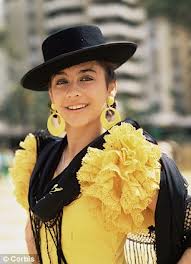
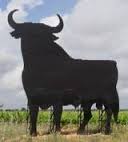
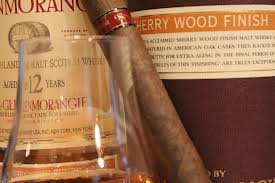
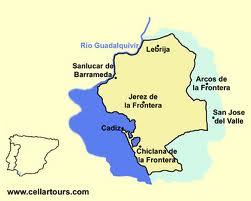
Andalucia
Deep in the south of Spain, the region of Andalucia, is where bullfighting, flamenco dancing, and beautiful, dark Spanish women have entranced the culture of Spain for thousands of years.
This is the region where the matadors, guitar playing, cigars and fine fortified wines also originated in the passionate country of Spain.
This is the heart and soul of Spain that passionately beats with the rapid click of the flamenco dancers heels as the castanets fly over the lovely fingers of the dancers.
And, this is where for centuries the Spanish men have sat smoking their cigars, taking in the beautiful Spanish culture as they sip their fine sherry wines, or as the Spanish say: Jerez.
Jerez de la Frontera and this area in Spain is of vast estates and great tradition. It is a life style of elegance and gentility that has all but disappeared in modern Spain. Sherry or Jerez is part of this way of life.
Sherry, or in Spanish, Jerez, is a fortified wine produced in the southwest region of Spain. The vineyards of palomino grapes that make up the sherry wine of Spain form a triangle between the three towns of Jerez de la Frontera, Puerto de Santa Maria and Sanlucaar de Barrameda in the southern region of Andalucia. They are located near the large port city of Cadiz, the same city where Christopher Columbus sailed from for the New World. In fact, when Columbus sailed the ocean blue he took barrels of sherry with him because it was fortified and would not spoil as quickly as wine.
Sherry has been produced in one form or another in Spain for more than 2,000 years. It is the most labor intensive and complex wine made by a very unique process, called the solera process, a fractional blending of old and new wines in a barrels.
The different types of sherry range from very dry with a fresh pale yellow color to very sweet and with a dark mahogany color. They are called fortified wines because the alcohol level exceeds that of regular wines on the market.
The name, jerez, can only be applied to wines from the Jerez area only and this is throughout the European Union. Any other sherries produced outside Jerez can only be called sherry.
This special area of Spain, outside and around Cadiz, has a special characteristic of high chalk content in the soil. This chalk soaks up the water in the rainy season and conserves it for the vine roots throughout the scorching hot summer months when temperatures can exceed 100 degress F.
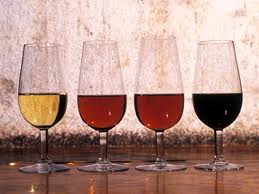
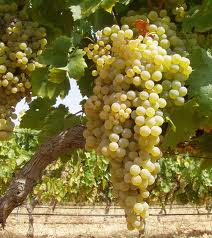
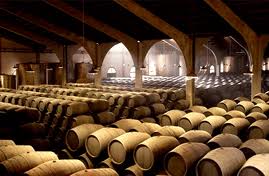
The solera system of fermenting sherry
Sherry wine is made from the palomino grape which is the most important sherry grape and is used in making all the main styles of the wine. The Pedro Ximenez (PX) grape is also used and has a richer juice and is used in the sweeter wines. And the Moscatel grape is made into a sweet wine.
The grapes are harvested and the wine is made exactly the same way as any other dry or sweet white wine. However, the year following the harvest, the wine is lightly fortified with a mixture of pure alcohol and wine to raise the alcohol strength to 14.5 percent. This stabilizes the wine and also provides nutrients for the growth of flor.
Flor is a natural occurring yeast that is a problem in many wine areas but in the area of Jerez it is something very beneficial to the wines that will become the finos.
It grows a film across the surface of the wine and feeds on residual sugars, fusel oils and other trace elements in the wine. The flor forms a physical barrier between the wine and the air in the head space of the cask. It protects it from oxidization and giving it a nutty, yeasty tang.
The oak barrels that develop a lot of flor go into a fino solera and those that do not go into an oloroso solera.
The wines that are selected to become fino later (the finest of sherries) are refortified to 15.5 percent and those for the oloroso wines are refortified to 17.5 percent which in this case will kill of any residual flor.
It is the intricate solera system of fermentation that is the key to quality control of sherry wine. It is the process of mixing young wines with older wines of a similar style to maintain consistency. Here is how the solera system works:
- Four of five rows of oak barrels (criaderos) are holding the wine. Each year two-thirds of the wine in each row will be blended with one-third from the following year.
- The wines taken from the oldest row is to be sold. This wine is then topped off from the next row and so on.
- A portion of the sherry from the last barrel is poured out and the barrel is then filled with sherry from the next to last barrel until the first barrel is filled with new sherry.
- Eventually the final criadero is replenished with the new wine of the year.
- Fino soleras are emptied periodically to maintain the freshness of the wine.
- Decent fino wines spend around five years in the system before being released and sold.
- Oloroso soleras may never be completely emptied and it is very difficult to know how old a sherry is when it finally is released.
- Every barrel will contain traces of wine that dates from when the solera was first established.
Once the wine has gone through the soleras process the sherry is put into oak barrels for aging.
Each style and type of sherry has its own solera and there are basically ten types of sherry wine. In the fino solera the new wine will refresh the flor growth each time. In the oloroso solera the new wine will quickly take on the richness and maturity of the older wine.
The solera system in the area of Jerez is a complicated process but this is what makes Spanish sherries so exquisite, fine, and expensive. Then these sherries can be aged anywhere from five to ten, to fifteen, to twenty and even to thirty years in barrels before they are released and sold. It is a long, complicated process but is painstakingly done each year in the sherry bodegas of Jerez de la Frontera. The Spanish are serious about their sherries.
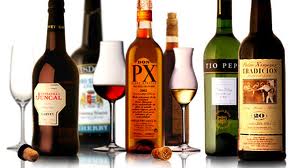
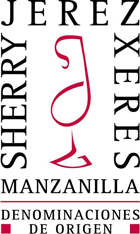
The Ten Types of Spanish Sherry
1. Fino
2. Amontillado
3. Oloroso
4. Palo Cortado
5. Raya
6. Pedro Ximenez
7. Moscatel
8. Cream
9. Pale cream
10. Manzanilla
The types and styles of Spanish sherries
There are a variety of types and styles of Spanish sherries all made from palomino grapes and then blended with different white and sweet grapes.
Fino sherries are the palest and driest of the wines of Jerez. These finos are heavier and more perfumed and have a flavor that is fresh, crisp, bone-dry and nutty.
The Manzanilla fino sherries are matured in the cool seafront town of Sanlucar de Barrameda which has its own unique oceanic mesoclimate. This is the most delicate and freshest sherry of all. Sometimes it has the flavor of a hint of citrus zest but it always has an almond nutty flavor.
The finos from Puerto de Santa Maria also have a lightness and delicacy that makes them perfect for the local seafood.
The Amontillado finos are aged beyond five years in the solera and the flor has died. The wine has begun to oxidize and turn a delicate shade of almond, but is still completely dry.
The Manzanilla pasada sherry is aged after ten years in the solera system and the wine has darkened to a walnut color and is called just Amontillado. It is bone-dry but with a mellow richness and pungent spicy odor.
Oloroso sherries become rich and pungent in style when they are matured after ten years in the solera and are still completely dry. These sherries are suitable for sweeting with the Pedro Ximenez grape to make "cream" style sherries. Today, most cream sherries are a commercial blend.
Pale cream and cream sherries are made from the Oloroso variety of sherry. The pale cream is light colored and slightly sweet and the cream is sweet, dark and as an intense aroma. These are good dessert with fifteen to twenty-two percent alcohol content. These are blended sherries where dry varieties are blended with sweet ones to make somewhat sweeter sherries.
Palo Cortado sherry is a rare and expensive style made when the flor yeast dies unexpectedly. It is aged separately and takes on the nuttiness of the finos.
Moscatel sherry is the sweetest of the sherries. They are fortified during fermentation to keep as much of the grapes' natural sugar as possible. These are very rich and volumptuous sherries. Some Moscatel sherries are produced in the providence of Malaga and they are warm and sweet and a dark color.
Pedro Ximenez (PX) sherry is made from the grape of the same name that has been laid out in the sun to shrivel before pressing. It is much like a raisin. This sherry can be nearly black, opaque and one of the world's richest sweetest sherries with a dark bouquet of raisin aroma.
A complex mathematical formula, I guess forever secret, is used to work out the 'average' age of the wines while they are in the solera. They must pass a tasting and approval test before any age categories may be claimed.
So, find an outdoor cafe in Spain, preferably in the Jerez area, and leisurely sip a sherry next time as you watch the Spanish world pass by. As you are sipping your sherry and watching Spain, order a few tapas dishes if you are drinking dry sherry and a yummy dessert if you are drinking a sweet sherry. Then, take in and savor the flavor of Spain!


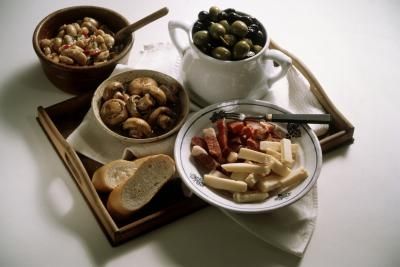
Pairing sherry with the right foods
To truly take in the Spanish culture and cuisines, sherry must be a part of your meals and lifestyle. Because sherry is fortified, is should not be eaten with the main meal because it is too strong of a wine. Sherry should be served and drank with tapas (hors d'ouerves) or with a sweet dessert after the meal.
Therefore, sherry is drank as an aperitif before or after the meal. Have a crisp dry sherry with some cold prawns (shrimp) along with salty almonds while relaxing on the banks of the Guadalquiver River. Choose a sweet cake or pastry for your sweet sherry.
Sherry is indispensible in Spanish cooki9ng as it is used in many fish and meat sauces as well as adding exciting flavors to desserts.
Here are suggestions of what to eat or serve with the different types of sherry:
- Fino sherry well chilled - as an aperitif with Spanish tapas: clams, shellfish, lobster, prawns,, langoustines, fish soup, or light fish such as salmon.
- Very old and rare sherry - should be served with cheese
- Fino and Manzannilla - should be served as an aperitif with tapas of lightly grilled or fried fish and smoked salmon. The taste of smoke comes out better with a pale sherry.
- Amontillado - should be served with light cheese, chorizo (sausage), ham or shish kebab, turtle soup or consomme.
- Cream sherry - should be served with cookies, pastries, and cakes.
- Pedro Ximenez - should be served with vanilla ice cream (can be a topping) or as a dessert wine before coffee and brandy.
Sources: Casas, Penelope. The Foods and Wines of Spain. Alfred A. Knopf, Inc.: New York. 1982.
Keevil, Susan (consultant). Wines of the World. Metro Book: New York. 2004
101 Essential Tips: Wine. DK Publishing, Inc.: New York. 1997.
Zraly, Kevin. Windows on the World; Complete Wine Course. Sterling Publishing Co. Inc.: New York, 1999.
Copyright 2013 Suzannah Wolf Walker all rights reserved
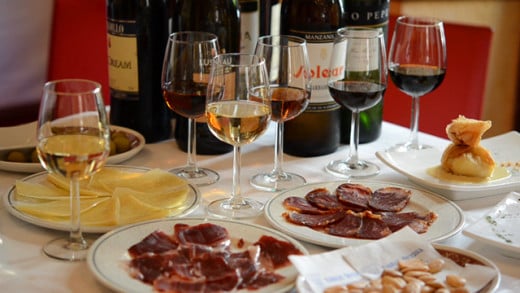

![Sherry & the Mystery of Palo Cortado ( Jerez & el misterio del Palo Cortado ) [ NON-USA FORMAT, PAL, Reg.2 Import - Spain ]](https://m.media-amazon.com/images/I/51bcLMPj5+L._SL160_.jpg)








